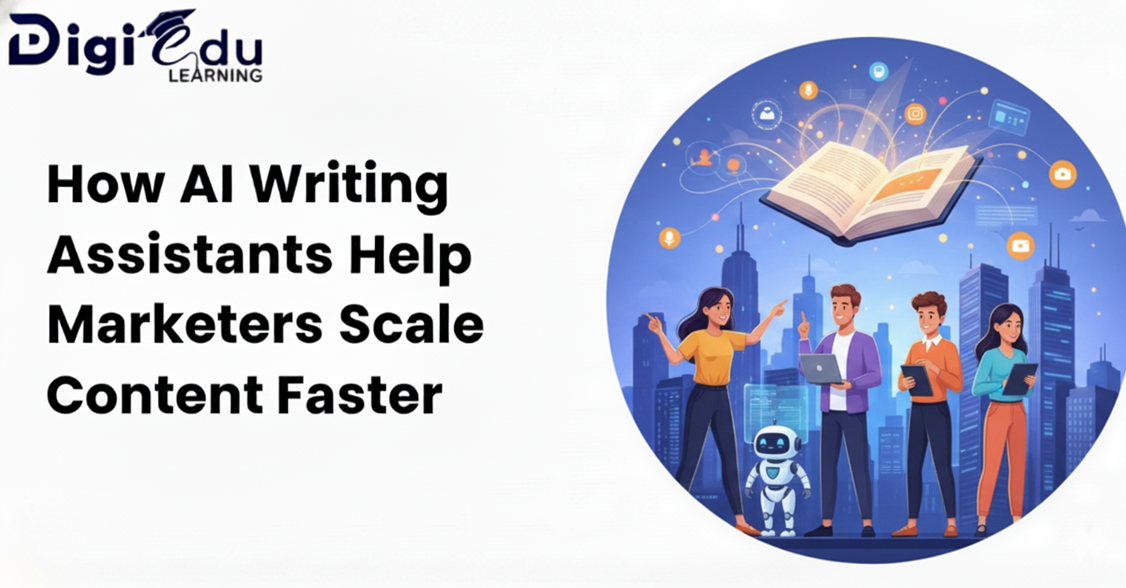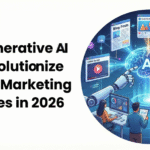How Generative Engine Optimization is Changing Content Marketing Forever

Understanding Generative Engine Optimization in 2025
In 2025, Generative Engine Optimization (GEO) content has emerged as one of the most transformational trends in marketing. At its core, (GEO) is not just an extension of traditional search engine optimization (SEO); this is a redistribution of how content is created, distributed, and presented to AI-driven search systems. Generative AI platforms are becoming primary interfaces for online search and research, and have been dramatically transferred to users to reach users.
Unlike Classic SEO, which targets the search engine result pages (SERPs), GEO focuses on how content is interpreted, summarized, and by large language models such as ChatGPT, Gemini, or the cloud. These models generate answers to user questions instead of presenting a list of hyperlinks, which means that your content must now be optimized to include in AI reactions. It is a game-changer for brands and marketers.
From Keywords to Contextual Intent
The foundation stone of traditional SEO has always been keyword optimization. Marketers are aiming to rank for specific search words through careful on-page strategy and link-building efforts. The GEO keyword disrupts this foundation by giving priority to relevance on density. A generative engine user analyzes large swaths of materials, removing the meaning, tone, and factual accuracy to produce reactions to user questions.
This means that the marketers should now produce content that aligns with the intentions behind a question instead of the phrase. Does anyone ask, “What is the best social media platform for B2B?” Or “Which platform should I use for business networking?”, GEO aims to ensure that your content provides an informative, full, and fine answer, and that it can be discovered by generative AI.
AI as the First Audience
Another seismic shift brought by GEO is that content creators are no longer writing perfectly for human readers; the first audience is now the AI model that will read, interpret their content, and possibly oppose their content. This challenges writers to focus on structure, meaning clarity, and factual accuracy. If a piece of content is unclear, excessive preaching, or lacks depth, the AI will probably make it out of its generated response.

To stand out, you must have the content:
- Rich in information
- Easy to interpret programmatically
- Structured with logical flow and context
In a GEO-driven world, the content that is accurate, well-sourced, and accessible has a greater chance of being quoted or synthesized by AI engines.
Long-Form Content Makes a Comeback
While social media snippets and short-form blogs are still valuable, the rise of the generic engine is focusing on a long time content. Comprehensive, intensive articles that fully address a subject from many angles are more likely to be referred to or quoted in AI output.
The 300-word summary is no longer cut off. If you want your brand to appear in generic search answers, then your content needs to be focused yet offer detailed explanations, references, examples, and quotes. This is about the building of the topical authority, not only the visibility of the surface level.
Structured Data and Semantic Markup Gain New Importance
Generative engines swallow different content compared to traditional search crawlers. They rely very on the structure, clarity, and metadata to understand the content. Applying Schema Markup, using the semantic HTML, and maintaining a consistent hierarchy in your titles helps the AI model process your site effectively.
This involves citing reliable sources, offering internal links to related content, and clearly defining concepts using natural language. The GEO prize content that makes AI work easier helps determine the quality and utility of the content quickly.
The Role of EEAT (Experience, Expertise, Authority, Trustworthiness)
An important factor in Google’s ranking system, EEAT has become more necessary in terms of SEO. Generative engines seek signs that the contents are written by real experts, supported by reliable evidence, and hosted on reliable platforms.
The writer contributes to the establishment of Bios, connecting with original research, sharing the study of the case, and providing verification data, all contribute to promoting EEAT. The purpose of the generic engine is to avoid misinformation, which means that the content deficient will often be excluded from the answers generated.
The Future of SEO Agencies in a GEO Era
With this paradigm change, SEO agencies and digital distress are developing their approach. The GEO does not eliminate the need for optimization; it accelerates it. But now the focus is on optimization for meaning instead of mechanics.
It also includes:
- Content strategy focused on depth and clarity
- Topic clustering to build expertise in specific domains
- AI model testing to see how your content performs in real-time, generated outputs
- Updating outdated content to remain relevant in AI citations
Instead of ranking only, the goal is to be referred to your content is to be part of the answer of AI, whether it is quoted or briefly.

Challenges and Opportunities
While GEO introduces complications, it also levels the playground. In fact, in small brands with supporting and high-quality content, there is a surface opportunity in AI-based answers with enterprise giants. However, it also increases the bar: thin, recycled, or excessive propagator content will fade in rapid ambiguity.
In addition, the generative AI is not correct. It can provide hallucinations or wrong quotes. It opens a window for smart content creators to audit AI reactions, identify gaps or errors, and publish corrective or supplementary content that may help advance AI.
Preparing for a GEO-Dominated Content Landscape
To prove your content strategy, start with the intention of the audience. Go beyond what their audiences are asking, and why they are asking. Create broad, accessory, and human-elective materials that also support easy AI interpretation.
2025 and beyond, those who win the distress will be those who not only customize their content for people, but also for intelligent engines that now serve as mediators of knowledge.
Conclusion
Generative Engine Optimization(GEO) is not only another marketing bust – this is a fundamental change in how to reach the content and affect the audience. Since the generative AI default becomes the search method, the content author should reconsider how they create their work and customize it. The GEO holds a premium on the meaning, authority, and structure, in favor of those who write with purpose and clarity.
For digital-first brands and agencies, it is time to work. GEO is not only the future of SEO, this is its development. And if you are navigating this change and need a content partner who understands the scenario, Digi Edu Learning can help you create content manufactured to make, quote, and be reliable in the era of Generative AI.
FAQs
What is Generative Engine Optimization (GEO)?
GEO is the practice of optimizing content so that it can be cited or included in AI-generated answers, replacing traditional keyword-based SEO.
Will GEO replace traditional SEO completely?
Not entirely. Traditional SEO will remain relevant, especially for web visibility, but GEO is critical for visibility in AI-driven search experiences.
How can I optimize content for generative engines?
Focus on clarity, structured data, EEAT principles, and comprehensive answers to user intent. Write for both humans and AI.
Is GEO only important for large brands?
No. GEO benefits any brand that produces quality, trustworthy content. Smaller publishers can compete if their content is helpful and well-structured.







Leave a Reply